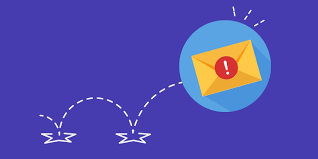In the digital marketplace, your email list is a vital asset. It's your direct line to customers, offering a personal touch in a world often dominated by impersonal interactions. But when emails bounce, it's more than a minor setback—it's a critical issue that can hinder your marketing efforts and tarnish your brand's reputation. Understanding and reducing high email bounce rates is a must for any marketer looking to convert prospects into loyal customers. Here's how to tackle high email bounce rates head-on and transform those bounces into conversions.
Diagnosing the Issue: Understanding Email Bounce Rates
Email bounce rates signify the percentage of your sent messages that are not delivered to the recipient's inbox. There are two types of bounces to be aware of:
- Hard Bounces: These occur when an email is permanently rejected either because the address is invalid or the recipient's server has blocked delivery.
- Soft Bounces: These are temporary delivery failures due to issues like a full inbox or a down server.
Having a high bounce rate can damage your sender score, affecting your overall email deliverability. The first step in tackling this issue is identifying the type of bounce you're dealing with and understanding the underlying causes.
Cleaning House: Pruning Your Email List
A clean list is a responsive list. Routinely prune your email list to remove non-existent users, correct errors, and bid farewell to unengaged subscribers who've consistently ignored your messages. Use an email verification tool to scrub your list, ensuring that you're only sending emails to valid addresses. A clean list improves deliverability and the overall health of your email marketing campaigns.
Getting Technical: Authentication and Infrastructure
High bounce rates can sometimes stem from technical issues with your email infrastructure:
- Ensure that your email authentication records (SPF, DKIM, and DMARC) are correctly set up.
- Consider the reputation of your email service provider (ESP) and your own domain.
- If you're on a shared IP, understand that your deliverability could be affected by the actions of others using the same IP.
Content That Connects: Creating Emails That Resonate
The content of your email could be contributing to your bounce rate. Are your subject lines engaging? Is your content relevant to the recipient? Personalization is key:
- Segment your list to tailor your messages to specific groups within your audience.
- Use analytics to understand what content engages different segments of your audience.
- Craft subject lines that grab attention without misleading the recipient about the email's content.
Engagement as a Metric: Tracking and Testing
Analyzing engagement metrics can give you insights into why bounces are happening. Are certain types of emails bouncing more than others? Use A/B testing to try out different approaches and track how they affect your bounce rate.
- Test different sending times, subject lines, and content to see what yields the lowest bounce rate.
- Look at the performance of emails to specific segments to find out if certain groups have higher bounce rates.
Taking Action: Strategies to Reduce Bounce Rates
Once you've identified the reasons behind your high bounce rates, it's time to take action:
- Implement a double opt-in procedure to ensure that subscribers are genuinely interested and that their email addresses are valid.
- Send re-engagement campaigns to awaken dormant subscribers.
- Educate your audience about whitelisting your emails to prevent them from landing in the spam folder.
Final Thoughts: Conversion is the Goal
Remember, the ultimate goal is conversion. By addressing the factors contributing to your high bounce rate, you're paving the way for a more successful email strategy that leads to increased engagement and, ultimately, conversions. With these steps, you can transition from battling bounces to celebrating conversions, fostering a robust email marketing program that drives results and boosts your bottom line.



